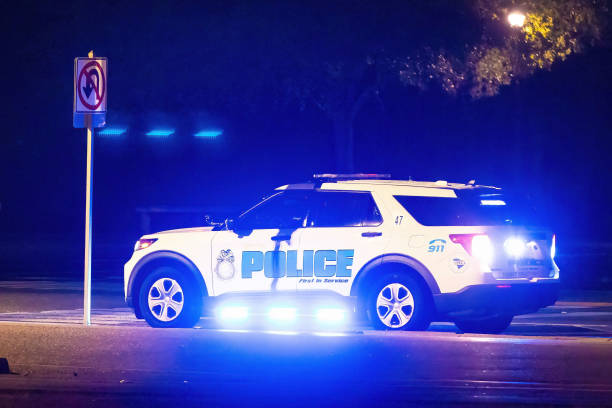Just before 1:30 a.m. on Saturday, July 6, 2025, the quiet hum of downtown Indianapolis was ruptured by a burst of gunfire at the intersection of West Market Street and North Illinois Street. In the immediate aftermath, seven people were struck by bullets—two would perish before dawn, and a seventh arrived independently at a hospital. That moment transformed a city’s renewed core into a flashpoint of grief, law enforcement mobilization, and urgent public concern.
A Community in Trauma
Indianapolis has aggressively worked in recent years to revitalize its urban heart. The stretch of West Market and North Illinois streets had become emblematic of that ambition—a crossroads of bars, event venues, pedestrian art, and vibrant nights. Residents returning from a suburban barbecue, overnight staff concluding evening shifts, and downtown diners were among those swept into the chaos of gunfire.
Fire and EMS crews—and later, IMPD SWAT and homicide units—responded swiftly. Medical teams rushed the wounded to local hospitals: Eskenazi, IU Health Methodist, and multiple trauma centers, including the Indiana Heart Hospital. The fact that one victim walked in independently underscores the culture of avoidance many adopt as violence unfolds.
The Scenes Collide: Law Enforcement’s Response
IMPD’s preliminary investigative timeline reveals officers arrived within 5 minutes. Bullet casings dotted the concrete. Evidence markers indicated shots fired in multiple directions. Early forensics will determine whether this was a targeted hit or indiscriminate spraying.
Police canvassed bars, delivery corridors, ride-share zones, and parking garage exits. Surveillance video from businesses was seized and is being reviewed for suspect identification. K‑9 units combed alleys. Horizon scanners picked up heat signatures in surrounding buildings. Interviews are ongoing.
The Unanswered Questions
Key mysteries have yet to crystallize:
-
Motive: Was this gang-related? A dispute? Random violence? So far, no symbolic targets—just people caught in the blast radius.
-
Perpetrator(s): No arrests yet. IMPD’s timeline suggests rapid deployment may have allowed the shooter(s) to disappear into the night.
-
Victim profiles: Their identities aren’t public yet—but understanding their backgrounds (local worker, visitor, or resident) is critical to motive assessment.
Urban Progress Disrupted
Downtown Indianapolis has been on a decade-long trajectory of rebirth. District revitalization, event corridors, and arts investments have attracted families, especially to promenades along White River. So why did this shooting happen here?
Experts suggest a dual tension:
-
Urban density + nightlife = more people late at night.
-
Under-addressed gun access + youth intervention gaps = risk of open-air firearm incidents.
Dr. Andrew Whitaker, a criminologist, explains: “Cities across America are facing this paradox—vibrancy and violence often occupy the same space. Without responsive policing and community intervention, the risk widens.”
Public Safety & Policy Implications
Local politicians and civic leaders wasted little time responding:
-
Proposals to fund more ShotSpotter sensors in downtown corridors.
-
Increased IMPD beat patrols during weekend peak hours.
-
Collaboration between IMPD, IndyGo, and downtown businesses on pedestrian safety and improved mobile lighting.
-
Talks underway around possible countywide emergency ordinances to authorize brief firearm shutdowns during high-risk events.
First-Person Vibes from the Scene
Sara Nguyen, downtown resident, was returning from work when she heard rapid pops. “It sounded like fireworks. Then people were screaming. We sought shelter in a restaurant basement. We were panicked.”
Michael Harris, 23, who posted bail minutes after being processed earlier that night, explained: “We were on the sidewalk outside Julep when we heard six shots. Someone fell nearby. We didn’t even know where the bullets were coming from.”
Grief Reflects on Community Values
City leaders have stressed a message of unity. IMPD Chief Randal Taylor called it “a wake‑up call,” while Mayor Teresa Ballard said this violence “must propel us to strengthen our systems—not retreat from public life.”
Downtown business owners adopted temporary hustle zones to give residents refuge and access to services. Congregations planned candlelight vigils for Sunday evening. Neighborhood groups are calling for a week-long community forum on urban safety in low-light conditions.
The Broader American Context
Indianapolis is not unique. Cities like Louisville, Columbus, and Cleveland—once seen as stable—have reported upticks in similar downtown incidents. A 2024 Giffords Law Center report found that nearly half of major U.S. cities saw downtown shootings double between 2020–2024.
That troubling trend embodies a national reckoning: revitalization without relational safety nets breeds terror zones. IMPD’s rapid response showcases best-case public safety execution—but healing requires more than policing.
What Comes Next
IMPD detectives are:
-
Deepening interviews with bar patrons, Uber/Lyft drivers, ride-along employees.
-
Scanning social media feeds for images, eyewitness video.
-
Tracking shell casing metallurgical patterns—standard shotgun or high-velocity rifle?
-
Comparing ballistic signatures with prior incidents in Marion County or the broader metropolitan footprint.
Prosecution will depend on building an airtight chain—but the promise of cameras, eyewitnesses, and prompt EMS support gives investigators an edge.

